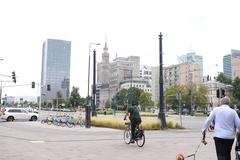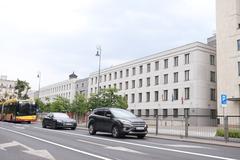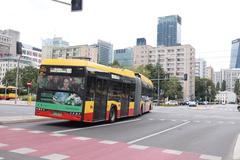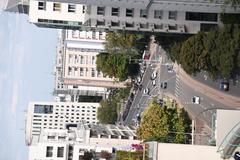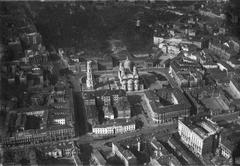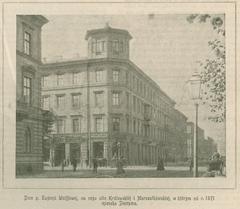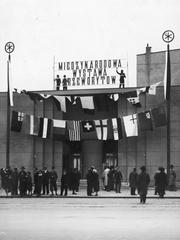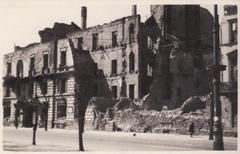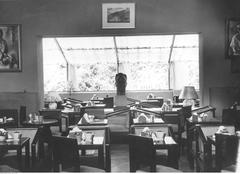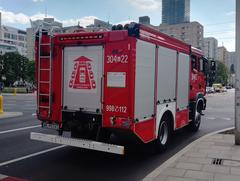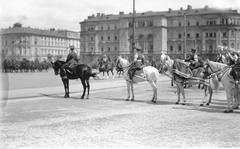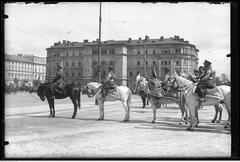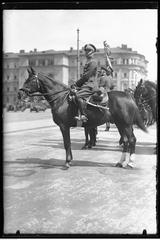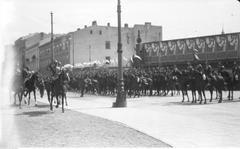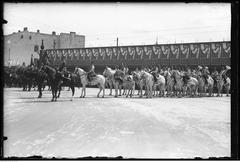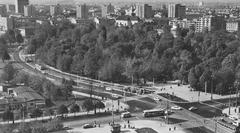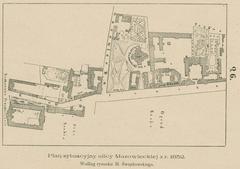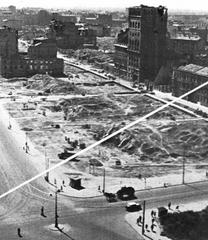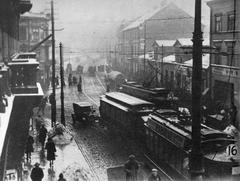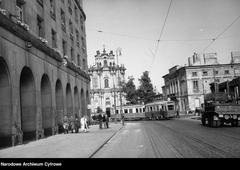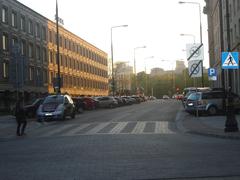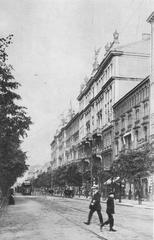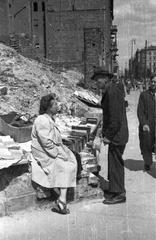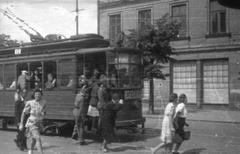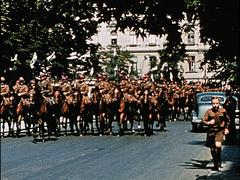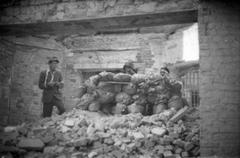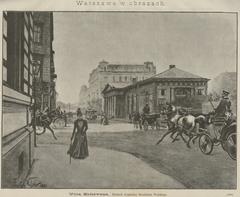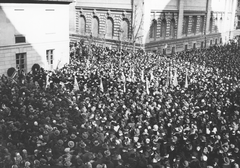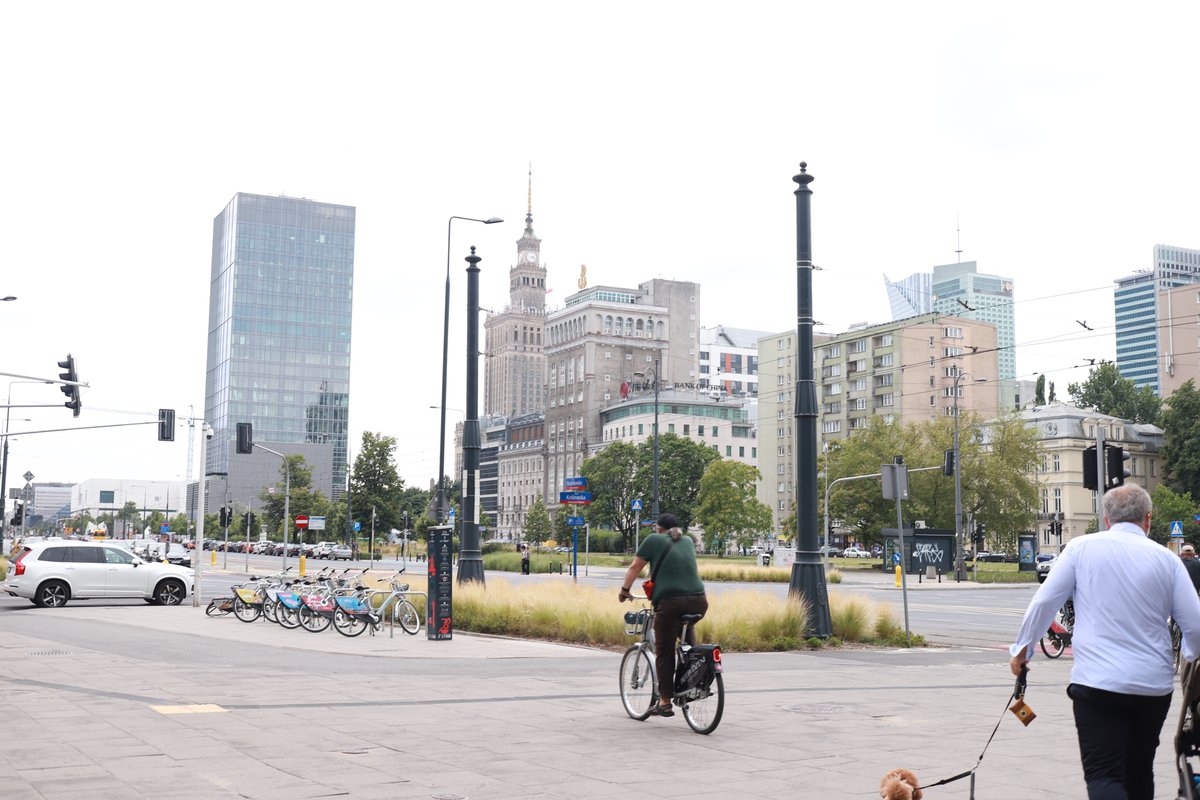
Królewska Street Warsaw: Visiting Hours, Tickets, and Historical Sites Guide
Date: 15/06/2025
Introduction
Królewska Street (Ulica Królewska) is a historic artery at the heart of Warsaw’s Śródmieście district. Spanning approximately 1.1 kilometers, it forms a crucial segment of the Royal Route (Trakt Królewski)—a ceremonial path linking the Royal Castle with Łazienki Królewskie Park and Wilanów Palace. Originally conceived in the early 18th century as part of King Augustus II the Strong’s grand Saxon Axis urban plan, Królewska Street has witnessed centuries of architectural splendor, cultural milestones, devastation, and resilient rebirth (Wikipedia; Notes from Poland).
Today, the street is a living canvas of Warsaw’s royal heritage and modern urban life. Reconstruction efforts aim to revive its prewar grandeur, restore lost landmarks like the Saxon and Brühl Palaces, and integrate sustainable design while maintaining vibrant civic functions (Architektura i Biznes). This guide offers a comprehensive overview of Królewska Street’s history, current projects, practical visitor information, and top attractions—helping you experience one of Warsaw’s most iconic settings to the fullest (The Crazy Tourist).
Historical Overview
Early Origins and Development
Królewska Street began as a rural road in the early 1700s. Its transformation into a grand urban avenue occurred around 1725, as part of the Saxon Axis (Oś Saska)—a visionary baroque plan by Augustus II the Strong to link royal and civic sites (Wikipedia). The street’s name, meaning “Royal,” reflects its proximity and connection to the royal court and ceremonial Royal Route (Wikipedia).
Flourishing in the 18th and 19th Centuries
Through the 18th century, Królewska Street flourished with aristocratic palaces (such as the Bieliński Palace) and Poland’s first professional theater, the Operalnia. The 19th century brought further transformation, with bustling marketplaces and the rise of tenement houses. The introduction of electric trams in 1908 signaled its integration into Warsaw’s modern infrastructure (Wikipedia).
Wartime Destruction and Postwar Reconstruction
World War II brought near-total destruction to Królewska Street, including the loss of the Saxon and Brühl Palaces (Notes from Poland; Brühl Palace Wikipedia). Postwar years saw modernist redevelopment, with socialist-era architecture replacing much of the former grandeur (Wikipedia; My Wanderlusty Life).
21st Century: Heritage Restoration
Today’s Królewska Street blends historic legacy with modern function. Ambitious reconstruction projects, backed by government and public will, aim to restore the Saxon Palace, Brühl Palace, and historic tenements (Architektura i Biznes). The restoration integrates modern urban design, sustainability, and accessibility (Królewska Street Official Site, Audiala).
Visiting Królewska Street: Practical Information
Opening Hours & Accessibility
- Królewska Street: Public thoroughfare open 24/7.
- Landmarks & Museums: Typically open 10:00 AM–6:00 PM, Tuesday–Sunday (varies by venue). Check individual sites for seasonal changes.
Tickets & Entry Fees
- Street and Outdoor Monuments: Free access.
- Museums/Palaces: Tickets usually 15–30 PLN (€3.50–€7); discounts for students, seniors, and groups. Book ahead during peak times.
How to Get There
- Public Transit: Trams, buses (stops near Marszałkowska, Piłsudski Square); Centrum metro station nearby.
- Parking: Paid parking in local garages.
Accessibility
- Street & Most Attractions: Wheelchair accessible. Ramps and elevators available in new/restored buildings.
Top Historical Sites & Nearby Attractions
Saxon Garden (Ogród Saski)
- Hours: 6:00 AM–10:00 PM
- Tickets: Free
- Warsaw’s oldest public park, adjacent to Królewska Street, with fountains, sculptures, and the Tomb of the Unknown Soldier.
Tomb of the Unknown Soldier
- Hours: 24/7 (Honor guard: 8:00 AM–8:00 PM)
- Tickets: Free
- Poland’s central war memorial, focal point for national ceremonies.
Piłsudski Square
- Major civic space hosting public events, parades, and ceremonies, adjacent to Królewska Street.
Teatr Wielki – Polish National Opera
- Ticket Office: 10:00 AM–6:00 PM
- Tickets: From 30 PLN. Tours available.
- One of Europe’s largest opera houses, a short walk from Królewska Street.
Zachęta National Gallery of Art
- Hours: Tue–Sun, 12:00 PM–7:00 PM; closed Mondays
- Tickets: 10 PLN; free Wednesdays
- Contemporary art exhibitions near Królewska Street.
POLIN Museum of the History of Polish Jews
- Hours: Tue–Sun, 10:00 AM–6:00 PM; closed Mondays
- Tickets: 25 PLN; free Tuesdays
- Immersive exhibits on Polish Jewish history, a short distance north.
Churches & Palaces
- St. Anne’s Church: 9:00 AM–6:00 PM (terrace ticket 5 PLN, panoramic city views).
- Lubomirski Palace: Exterior accessible anytime; interior by appointment.
Shopping, Dining, and Nightlife
- Nearby Nowy Świat and Hala Gwardii food hall offer local cuisine and entertainment.
Guided Tours, Special Events, and Cultural Activities
- Guided Walking Tours: Focus on Królewska Street, the Royal Route, and Warsaw’s heritage. Can be booked via local operators and tourist offices.
- Events: Seasonal markets, exhibitions, public ceremonies, and concerts—especially on national holidays and during festivals.
- Educational Programs: Reconstructed palaces will host exhibitions and interactive events about Warsaw’s history (WXCA).
Reconstruction Project: Vision and Timeline
- Mandate: Restoration of Saxon Palace, Brühl Palace, and historic townhouses, as per the 2021 government act (ArchDaily).
- Design: By WXCA studio, blending historical facades with sustainable design and public spaces.
- Functions: Future home to government offices, cultural institutions, restaurants, and shops (palacsaski.pl).
- Timeline: Construction begins 2026; major elements expected by 2030. Budget: 2.45 billion PLN.
Frequently Asked Questions (FAQ)
Q: What are the visiting hours for Królewska Street and its attractions?
A: The street is open 24/7. Museums and reconstructed buildings generally open 10:00 AM–6:00 PM.
Q: Is there an entry fee for Królewska Street?
A: No, street access is free. Museums and special exhibitions may require tickets.
Q: Are guided tours available?
A: Yes, local operators offer tours focusing on Królewska Street and the Royal Route.
Q: Is the area accessible for people with disabilities?
A: Yes. Accessibility features are incorporated into public spaces and reconstructed buildings.
Q: What is the best time to visit?
A: Spring and early autumn for pleasant weather; mornings and weekdays for fewer crowds.
Plan Your Visit
- Transport: Use public transit or bike-sharing for convenience.
- Check: Event calendars for special happenings.
- Guides: Download the Audiala app for audio tours and up-to-date information (Audiala).
- Nearby: Explore the Royal Route, Old Town, and Wilanów Palace.
Visuals and Media
- Suggested Images:
- Saxon Garden’s fountain (alt: “Saxon Garden fountain near Królewska Street”)
- Tomb of the Unknown Soldier (alt: “Tomb of the Unknown Soldier monument in Warsaw”)
- Teatr Wielki facade (alt: “Grand Theatre Warsaw exterior”)
- Panoramic view from St. Anne’s Church terrace (alt: “Panoramic view of Warsaw from St. Anne’s Church”)
- Maps: Highlight Królewska Street’s location on the Royal Route.
- Virtual Tours: Check official websites for digital experiences.
Summary and Recommendations
Królewska Street stands as a symbol of Warsaw’s endurance and regeneration, weaving royal heritage with modern urban vibrancy. Its ongoing restoration, historical landmarks, and cultural events make it a must-visit for any traveler interested in Poland’s past and present.
Prepare for your visit by checking official websites, joining a guided tour, and exploring the surrounding historic landscape with the help of the Audiala app.
References
- Ulica Królewska w Warszawie (Wikipedia)
- Reconstruction plans for Warsaw Palace destroyed in WWII (Notes from Poland)
- Royal Route, Warsaw (Wikipedia)
- Palace Saxon – What’s On (Architektura i Biznes)
- Call for entries: Saxon Palace, Brühl Palace, and tenement houses competition (ArchDaily)
- Saxon Palace Project (WXCA)
- 25 Best Things to Do in Warsaw (The Crazy Tourist)
- Królewska Street Reconstruction Project Wins Second Place (WhiteMAD)
- Królewska Street Official Site (Audiala)
